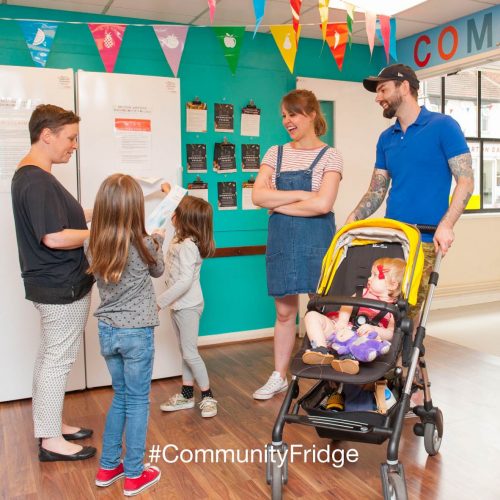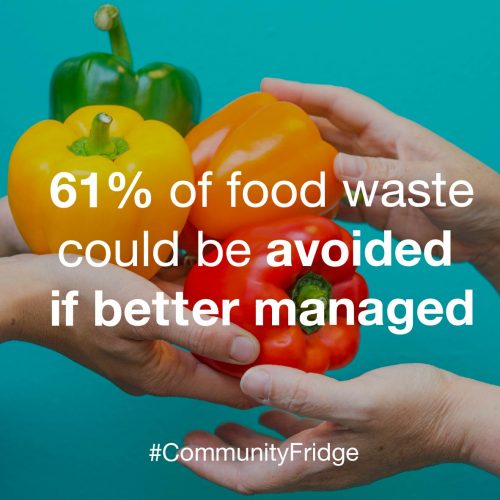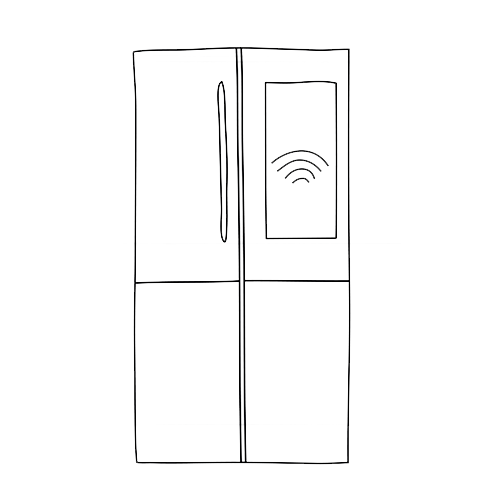Community Fridge
What is a Community Fridge?
Food waste is a big issue. Every year the average household throws away £470 of edible food. A Community Fridge is a tried and tested way to preventing good quality food going to waste. Surplus food is provided by local businesses or members of the public and is then available for collection by people who have a use for it.
Mull and Iona Community Trust are piloting a Community Fridge, to help combat local food waste, by sharing unused, good quality food.
Community Fridge Update
The Community Fridge was relocated to the Aros Hall in Tobermory in April 2022. We relocated to Tobermory after funding ended and this is more manageable for our volunteers to operate the fridge daily.
Helping Our Island to Reduce Food Waste
As an island community we always do our utmost to reduce, reuse and recycle.
October 2018 saw the launch of Scotland’s first island community Fridge in Craignure on the Isle of Mull. The Mull and Iona Community Fridge is operated by Mull and Iona Community Trust (MICT) who was awarded funding from the Climate Challenge Fund and European Regional Development Fund (ERDF) for a new project focused on reducing waste and increasing knowledge of climate change.
The Mull & Iona Community Fridge is located at Craignure Village Hall and enables food to be shared within our community, anyone can put food in, and anyone can take food out. No money is exchanged, it’s based on donations and food can be taken for free.
The main aim the fridge is to reduce food waste. In 2015 UK Household food waste was 7.3 million tonnes, of which it is estimated that 4.4 million tonnes could have been avoided. Not only that, but food waste that decomposes in landfills releases methane, a greenhouse gas that is at least 28 times more potent than carbon dioxide.
We encourage everyone to use the community fridge, locals, holiday makers, day trippers, everyone. Anyone can put food in, and anyone can take food out.
There are a few rules for fridge food donations; food can only be put into the fridge if it’s in its original packaging, is unopened and within the use-by date. Dry foods can also be left, but no alcohol!
We also have a freezer and you’re welcome to donate any frozen food that also follows the donation rules, the more donations the less going to waste.
So, if you’re here on holiday, a resident, or simply passing through and have food that you don’t want to take home, or no longer think you’ll use, please donate it to the Community Fridge.
The Fridge is located at Craignure Village Hall, a 5 minute walk from the ferry terminal, and is open 9-5pm Monday to Friday and Saturdays 6:45am-5pm.
Let’s not let good food go to waste, donate it to the Mull & Iona Community Fridge today. For more information check out our community fridge webpage.



We are members of Argyll and Bute Food forum. Who are a network through which existing food waste and community food initiatives & independent food-banks can share experience, advice and ideas.



A simple solution to wasting less through the sharing of good quality food.
Buying Local & Seasonal
There are many reasons for buying local food. Your supporting local farmers and producers, contributing to the local economy and helping to protect the countryside.
Many of the foods on Mull were born, raised and butchered on Mull. Foods reared in this way have a much lower impact on greenhouse gas emissions.
If you don’t buy local food, the food you buy may have been air-freighted, as well as being trucked up and down the country. A quarter of all lorries on the road carry food. Air freighting of fruit and vegetables is a major contributor to greenhouse gas pollution from our food supply system. Cutting the distance your food has to travel is a simple idea that many shoppers respond to. It is better still to buy seasonally and think about eating less, but better quality (especially grass-fed), meat and dairy to cut your carbon footprint further.
Eating local food is not the ONLY answer, but it is a small contribution that you can make to reduce your carbon footprint.

